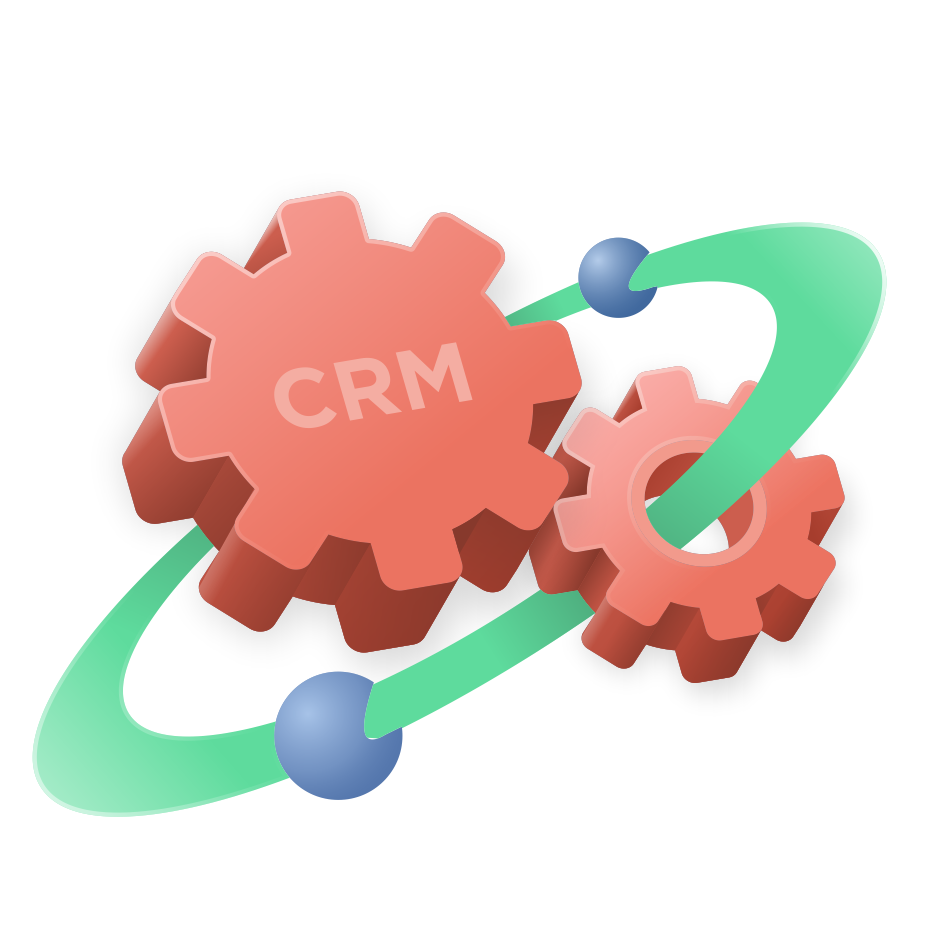To supercharge your sales and marketing efforts, you need a system that helps you analyze your lead data. Enter the hero of the day: lead tracking!
This invaluable tool will help you analyze lead sources, increase your chances of converting your prospects into paying customers, and thus close more sales deals.
After reading our post, you will learn everything about lead tracking, including what data you need to monitor, the best strategies, and insider tips on how to approach it.
Let’s do this!
Outline
What is lead tracking?
Lead tracking is a process of identifying where your potential customers come from, determining how they move through your sales and marketing funnel, and outlining the strategy to guide them toward making a purchase.
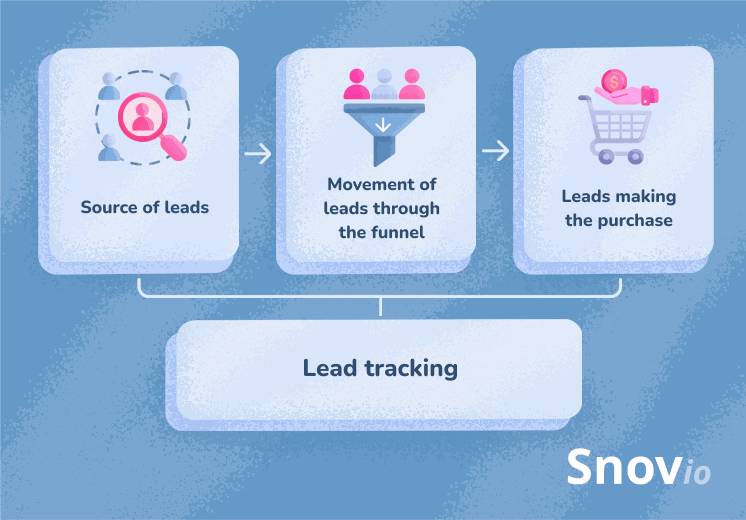
|
🗝️Key takeaway Lead tracking provides busy businesses with immediate insights into customer acquisition. It precisely monitors the process of acquiring new clients and identifies points where prospects may be lost. This reveals optimization opportunities, whether through refining marketing campaigns or streamlining the workflow of sales reps. |
Why is lead tracking important?
This is an essential technique for any company that wants to enhance its sales performance. It provides valuable data that can be used to get more qualified leads, improve conversion rates, and optimize marketing campaigns.
Through lead tracking, you can identify the factors contributing to lead conversion and pinpoint areas where potential customers may be disengaging. This insight allows you to enhance both your conversion and retention rates effectively.
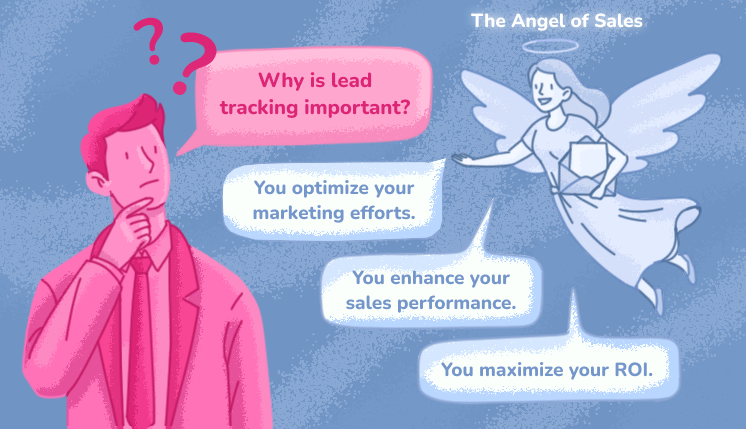
|
💡 Pro-tip When it comes to sales or marketing leads, don’t put all your eggs in one basket. Mix various methods to attract, nurture, and convert your prospective customers. Keep an eye on what works best so you can invest effort wisely and ensure that every lead has a smooth customer journey. |
Why do sales and marketing need lead tracking?
Both teams are intertwined, working towards generating revenue for the company. Lead monitoring acts as a bridge between them, offering crucial insights for each department. It’s a powerful tool that fuels company success.
|
The benefits of lead tracking: 1. Valuable customer insights |
1. Valuable customer insights
A fine-tuned lead management process contributes to a deeper understanding of your target audience. By analyzing leads’ behavior and preferences, you can identify buyer personas and tailor your marketing strategies to resonate with your audience better.
2. Personalization
With a lead tracking strategy in place, you can gather valuable lead information, such as their preferences, behaviors, and interactions with the company. This lead data allows for more personalized and targeted marketing and sales efforts.
3. Timely follow-ups
Knowing when and how leads interact with marketing materials allows sales teams to send follow-up emails at the right time and grab the hottest sales opportunities.
4. Efficient resource allocation
Up-to-date information on your leads is key to identifying those who aren’t a good match. This helps optimize your marketing spend and ensures your nurturing efforts target the most promising potential clients.
→ Read our lead qualification guide to learn how to increase the number of qualified leads in your funnel.
5. ROI improvement
By tracking the source of your leads (e.g., social media, email, etc.), you can optimize your strategy to target the channels generating the most qualified prospects.
In addition, tracking lead behavior (for example, CTR and open rates) allows you to tailor your outreach with relevant content. This keeps those high-value prospects engaged and moving closer to a purchase, ultimately leading to a higher ROI for your marketing efforts.
How to track leads effectively: best practices
Picture lead tracking as a detective who tracks potential customers, gathers crucial data, and guides you to refine your strategy for more conversions.
It may sound a bit laborious but don’t be intimidated. We’ve prepared a clear step-by-step plan on how you can do all that quickly and efficiently.
|
Lead tracking strategy for sales and beyond: 1. Define your goals |
1. Define your goals
Before taking any actionable steps, allocate some time to set clear, quantifiable objectives for your sales and marketing teams.
|
💡 Set SMART goals This is a framework for setting practical goals that are clear, achievable, and measurable. S: Specific For instance, if you aim for revenue growth, your SMART goal can be to increase the conversion rate from marketing-qualified leads (MQLs) to sales-qualified leads (SQLs) by 15% within one year. This will be your SMART goal. |
2. Collect lead data
Lead data is information about potential clients that provides insights into their pain points, interests, and qualifications for becoming paying customers.
Effective lead tracking involves gathering the details you need about each potential customer, sorting them based on their behavior and personal information, and letting sales reps handle them according to their position in the pipeline.
3. Use lead tracking software
By now, you might think you need a team of experts to gather all that data. Luckily, those times are long gone! Now, all you need is reliable CRM software to collect and analyze the needed data.
We’ve rounded up the top-notch customer relationship management software and lead tracking tools. Check out the list below and choose the best option for your needs.
1. Snov.io
Best for: Lead generation, lead tracking and management
![]()
In addition to being an all-in-one sales engagement and automation platform, Snov.io brings a lot to the table when it comes to effective lead tracking. It’s a combination of a free comprehensive CRM system and a lead-tracking tool that you’ll find genuinely useful.
So, what can you do with Snov.io?
Capture leads
Snov.io features a robust Email Finder extension, allowing you to build a customer database effortlessly. All you need to do is install the extension, go to any website you need, select the Email Finder icon, and save the contact list to CRM. It’s that simple!
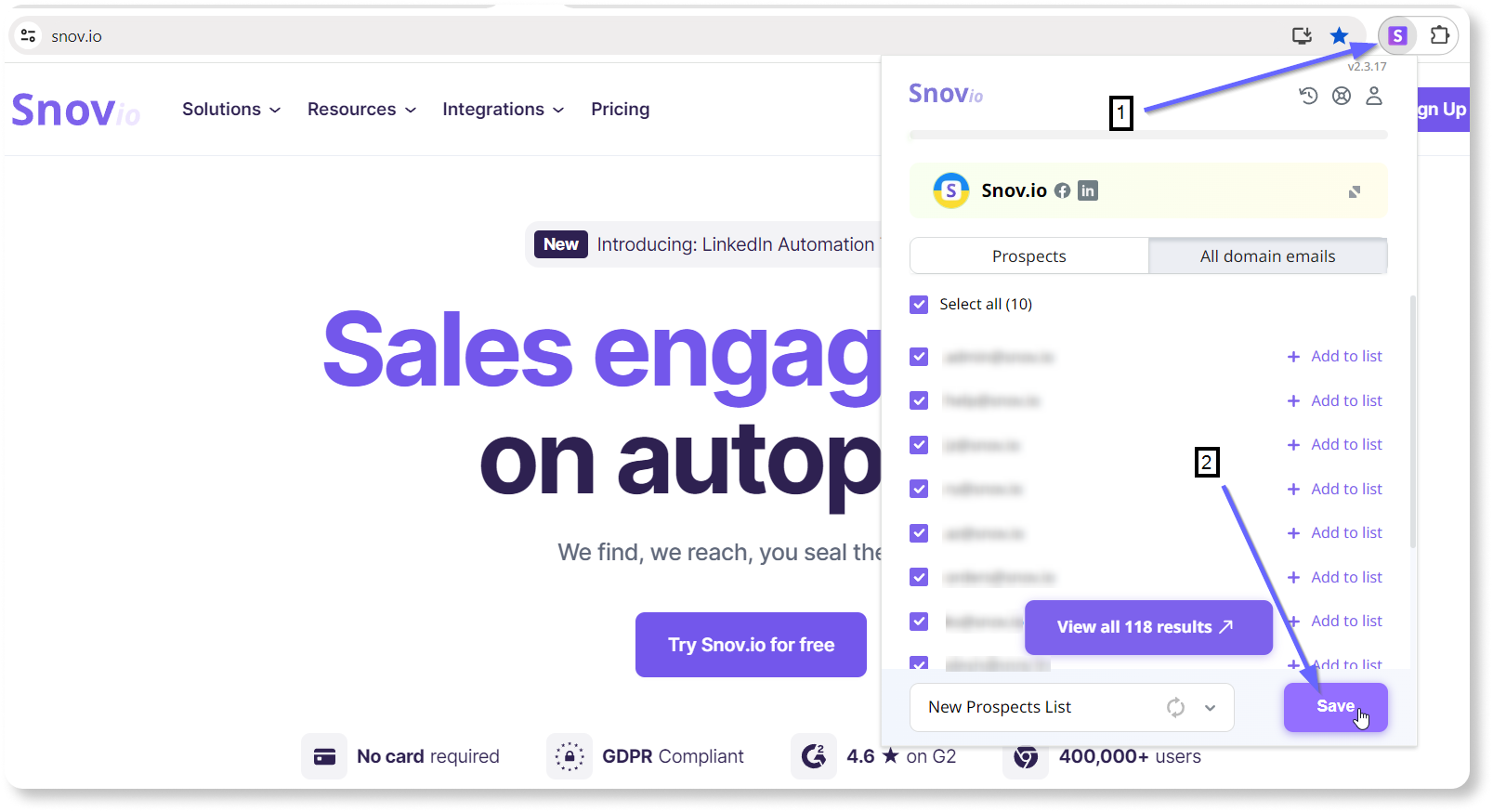
If you want to gather contacts from LinkedIn, you can do that with LI Prospect Finder. The algorithm is the same: download the extension, go to the LinkedIn search page or any account you need, select the LI Prospect Finder icon, and save the contact to CRM.
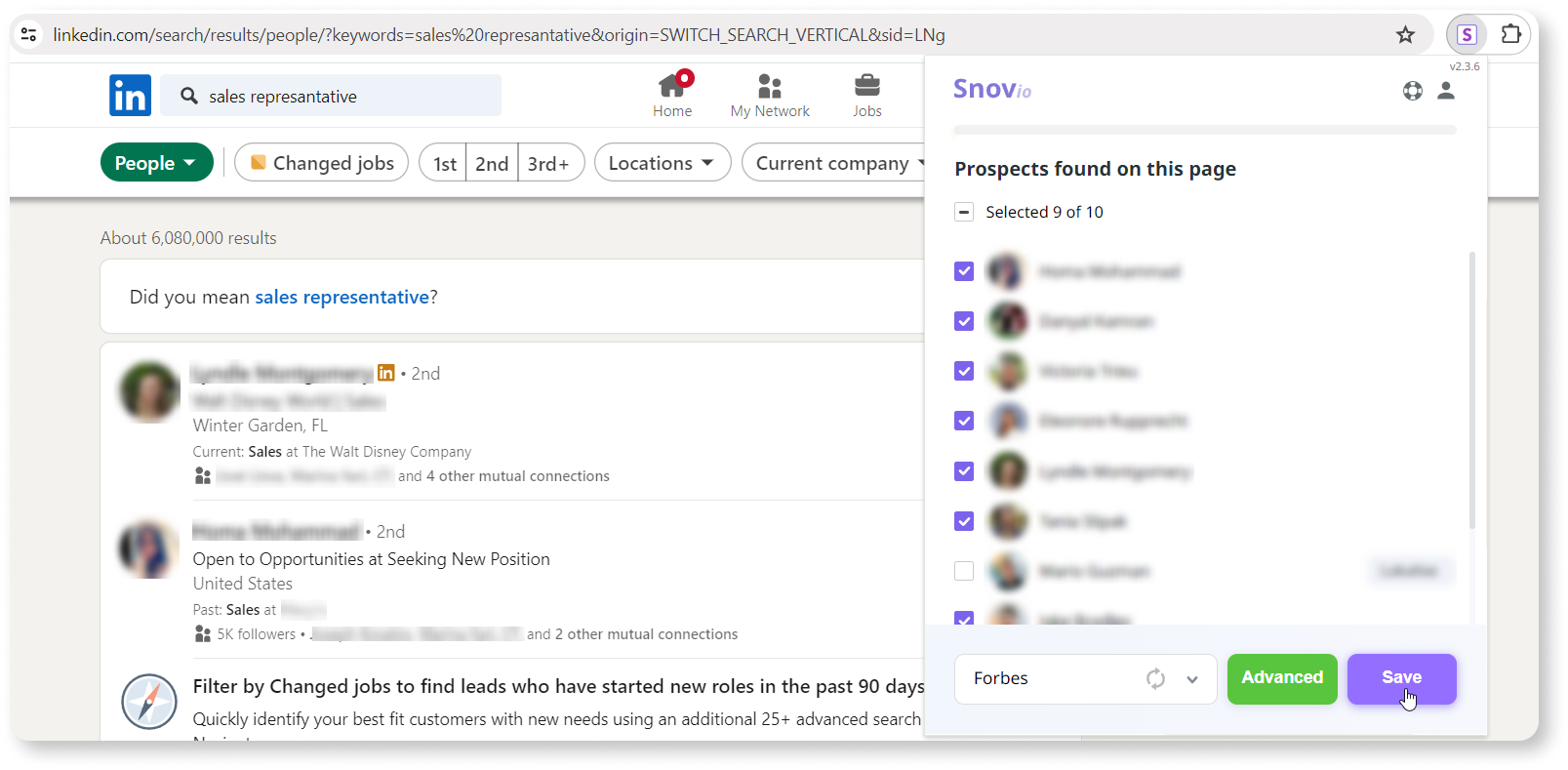
What makes it even better? Thanks to Snov.io’s integrated Email Verifier, you can trust that your lead base contains only valid contacts.
Qualify your leads through the email campaigns
Use email analytics to see which content pieces bring the highest open rates, click-through rates, and downloads. Leads who consistently engage with your emails are more likely to make a purchase down the line.
With Snov.io Email Drip Campaigns, you can create a thorough email sequence, personalize each message, and track the campaign’s performance. You can also send automated follow-ups based on the leads’ behavior.
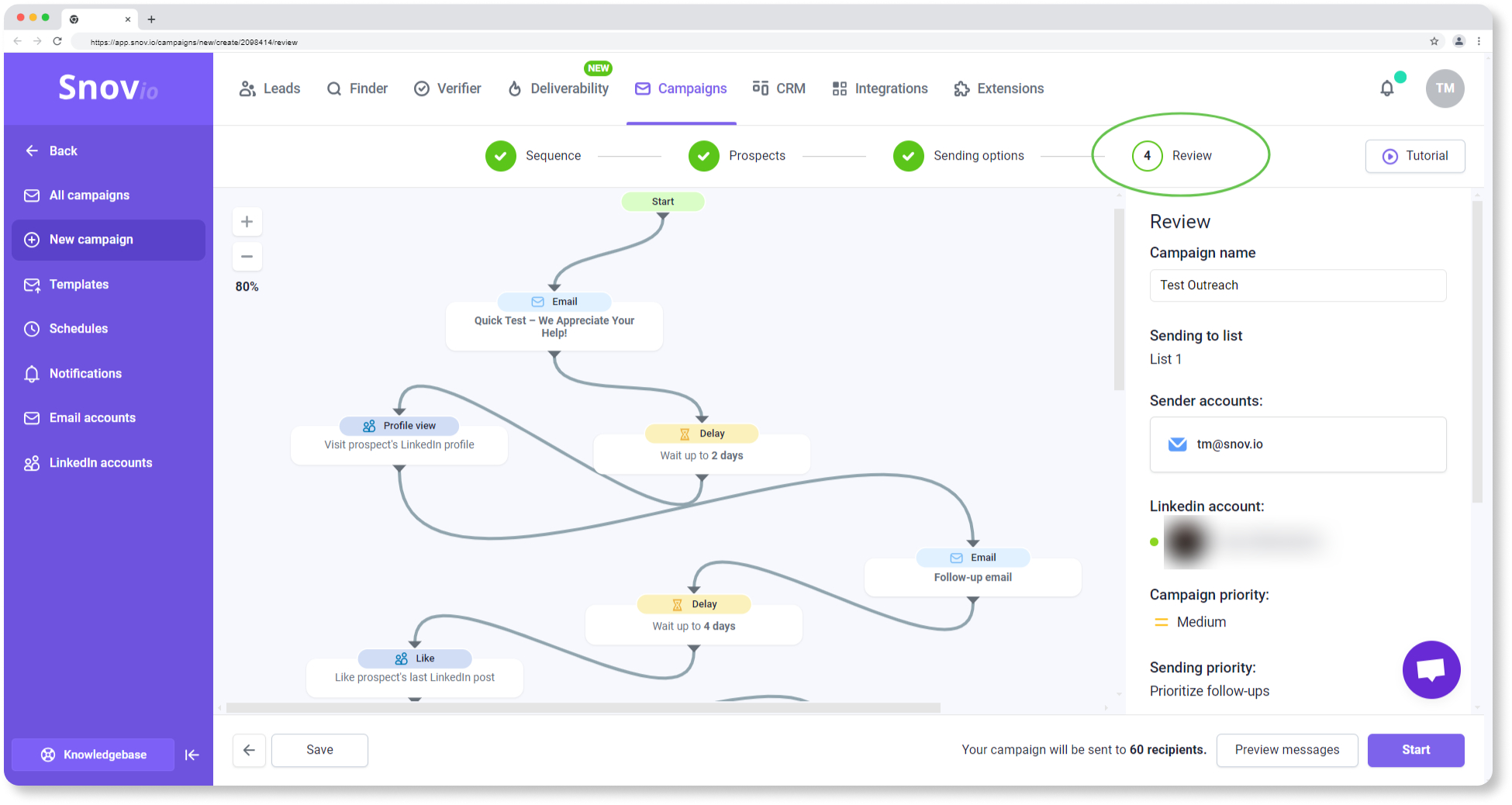
Manage information about your leads
With Snov.io CRM, you can keep track of all the detailed information about your leads, such as the date you added them to your list, the date the verification status changed, the campaigns to which the lead was added, etc.
Plus, you can also set up automation in your email campaigns and automatically add prospects to CRM deals when they open, click, or reply to an email.
Track how leads are moving through the funnel
Create deals for your leads and see how they are moved from stage to stage in the pipeline view:
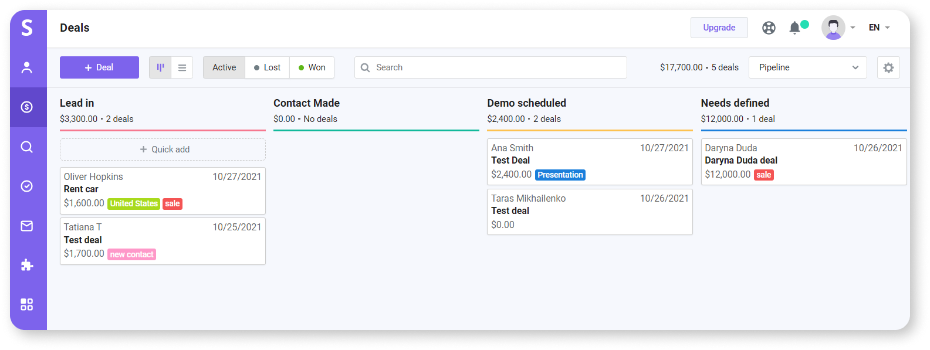
And here’s the cherry on top—you can collaborate with your marketing and sales teams to track leads jointly when closing a deal.
2. SendPulse
Best for: Complex lead tracking based on user behavior
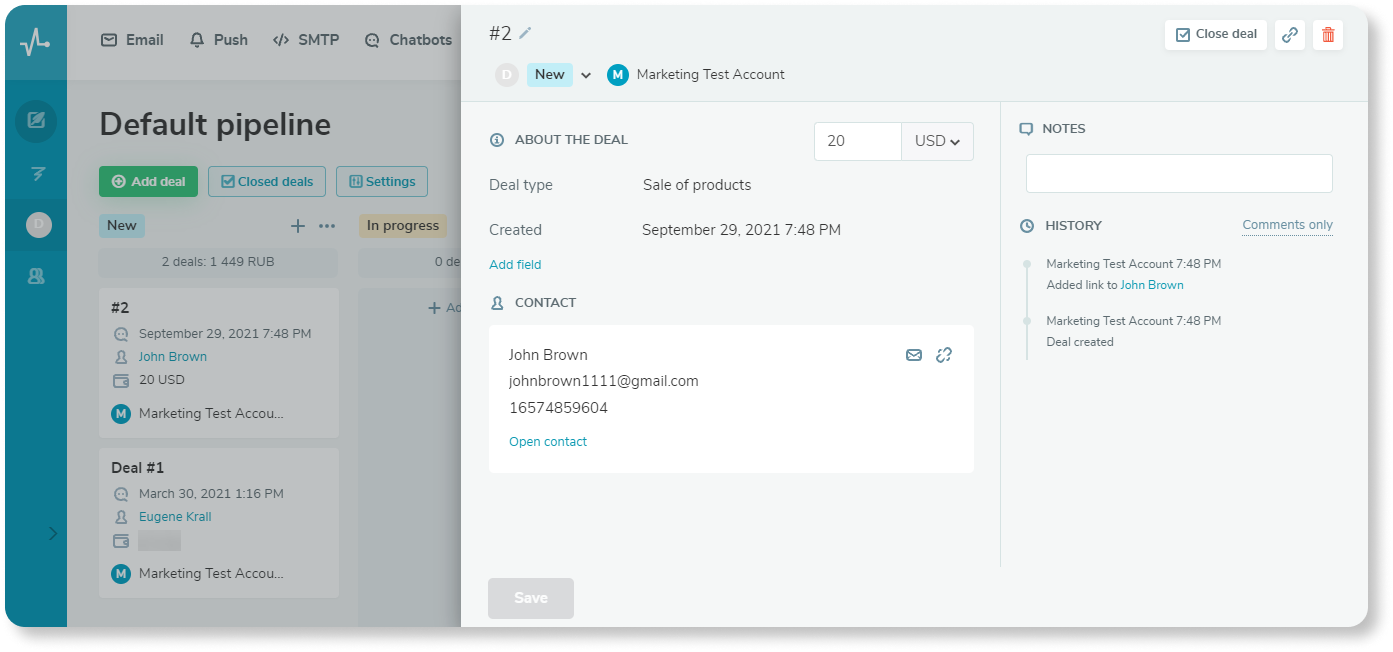
SendPulse is a suitable solution for monitoring sales processes and building strong lead relationships. The integrated CRM centralizes prospect data, providing comprehensive insights for marketing and sales teams to guide customers through the sales process and enable a personalized experience.
Main features:
- Automation 360: Set up triggers based on specific actions or behaviors exhibited by your leads. This could include opening emails, clicking links, visiting particular pages on your website, and more.
- Lead scoring: Rank leads based on their interactions with your content and other behaviors. This way, you can focus your time and energy on the prospects most likely to become customers.
- Multi-channel integration: Track sales leads through emails and other channels, such as web push notifications, SMS, and chatbots.
3. Capsule CRM
Best for: Lead nurturing, іales pipeline management
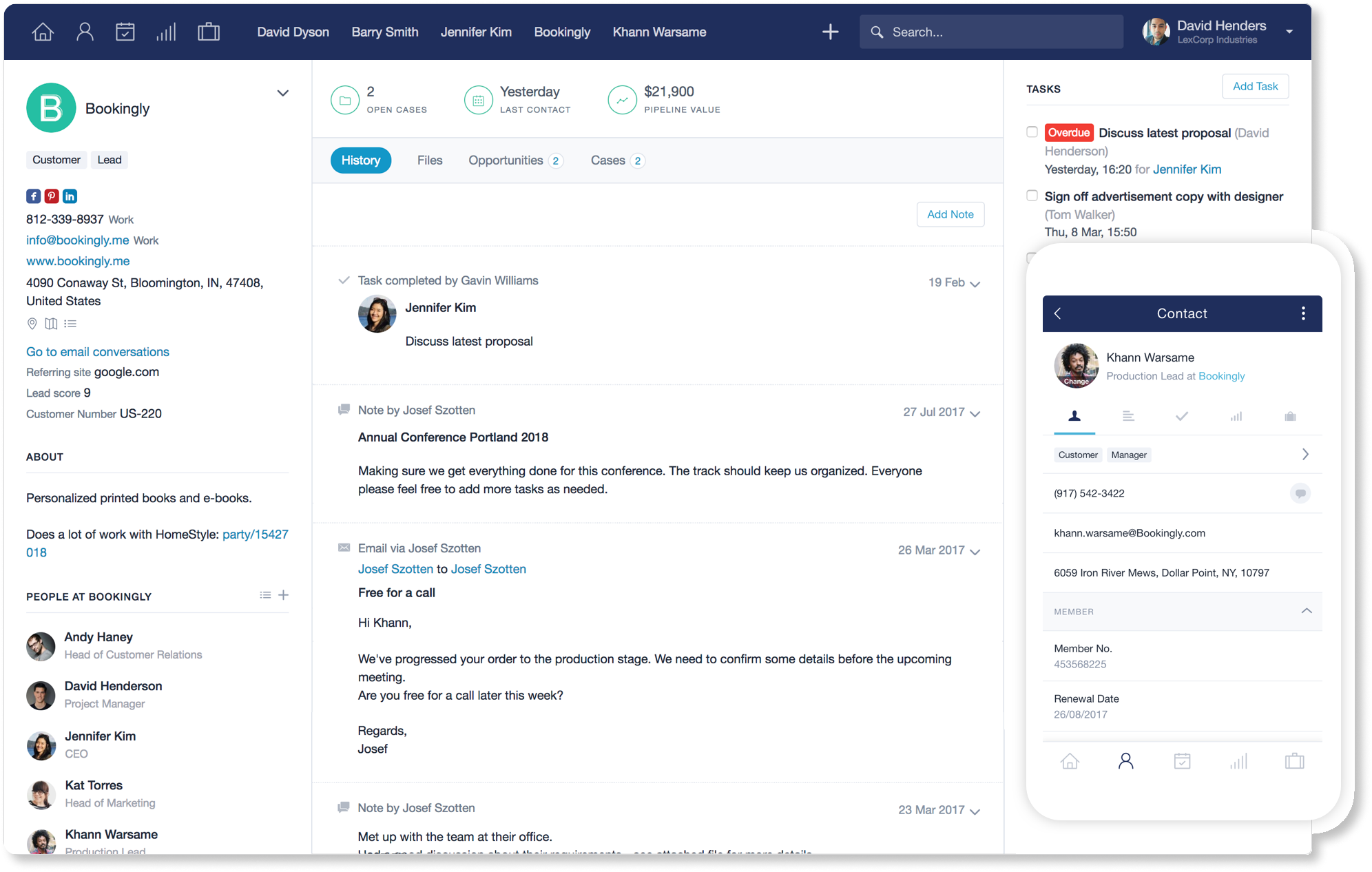
With this lead tracker, you can nurture leads and keep all the essential info in one place. You can also check the communication history with each customer, manually add contacts to the system, or upload them from Outlook, CSV files, or vCard.
Main features:
- Contact management: Store and organize your customer database efficiently.
- Communication history: Keep track of customer interactions over time.
- Integration capabilities: Sync with various applications and platforms such as Outlook, Google Workspace, Mailchimp, and more.
- Customization: Tailor fields and categories to suit your needs, enhancing the ease of tracking sales leads.
4. Pipedrive
Best for: Sales pipeline management

Pipedrive helps you track sales leads by providing you with a visual representation of all your sales processes. Color-coded labels make deals easy to spot, and custom fields help organize information.
Main features:
- Visual pipeline: Create visual representations of your sales pipelines and track how customers move through them.
- Smart contact data: Import valuable information about your potential customers from the web with just one click.
- Web Visitors add-on: Track activity on your website and detect companies most likely to convert.
- AI-powered sales assistant: Provides tailored tips on tracking progress, elevating sales strategies, and boosting overall sales processes.
|
🤩 To get even more lead-tracking perks, integrate Pipedrive with Snov.io and enjoy the automation combo for lead capture, lead management, and easy data update. |
4. Analyze data with Google Analytics
This tool offers comprehensive insights into audience behavior, helping you track lead sources, analyze which content pieces are most effective at nurturing leads toward conversion, and monitor lead conversion rates.
Ultimately, Google Analytics enables you to make data-driven decisions to enhance lead generation and maximize ROI.
|
💡Pro-tip Try using UTM (Urchin Tracking Module) codes. These short snippets added to your website’s URLs act like little tags that track specific details about how people found your page. If you have Google Analytics set up, Google will automatically track data along with other website visitor information. |
5. Develop a lead scoring system
Attribute scores to leads based on their engagement (website visits, downloads, email opens, etc.) to prioritize those with the highest conversion potential.
Refine your scoring system over time based on data analysis to optimize lead qualification.
6. Prioritize lead nurturing
Customers have their own unique pace when it comes to making purchases—some like to decide quickly, while others take their sweet time. That’s why having a well-thought-out customer journey and a smart lead nurturing strategy is so important. This way, conversion rates are bound to boost.
Hence, striking the right balance in communication with leads is key. Long pauses between interactions increase the chances they forget about your business, yet bombarding them with sales messages is also counterproductive. Plan your outreach campaigns to allow leads to progress at their own pace through the sales funnel.

Sales Psychology: What You Need To Know About B2B Selling
November 1 2024
7. Incorporate web forms
Web forms are interactive webpage elements asking users to enter and submit information about them. Open web form types include but are not limited to:
- Signup
- Order
- Survey
- Lead capture forms
Etc.
Web forms help you gather information from potential customers interested in your product or service. Besides, by reviewing form submissions, you can gain insights into how your content and design influence lead engagement.
Expert tips for effective lead tracking
Now that you’re equipped with the foundations, you can start putting this knowledge into practice. But before you go, check out this checklist that goes beyond basics:
✅ Budget wisely: Lead tracking can be simple (a spreadsheet) or complex (elaborate software). Consider your team size, deadlines, and goals to choose the right option.
✅ Plan for incoming leads: Estimate how many potential customers you might get monthly. This helps you plan how much time and effort goes into organizing that information. It can also help you assign tasks within your sales team more effectively.
✅ Think about your team: Tracking leads can be time-consuming. Consider how much time your team has available. You might need to delegate tasks or outsource some of them.

✅ Be proactive: Educate yourself about advanced lead tracking methods and software. Attend courses or webinars to keep informed.
✅Analyze data: Examine the quality of your current leads to assess the performance of your lead tracking process. Update your approach accordingly.
It’s your turn now
Let lead tracking be your guide in the lead generation process. Combine this valuable tool with your prospecting methods, and we are sure you will see positive results soon.
And don’t forget to make use of sales automation tools like Snov.io to find and qualify leads more efficiently.


